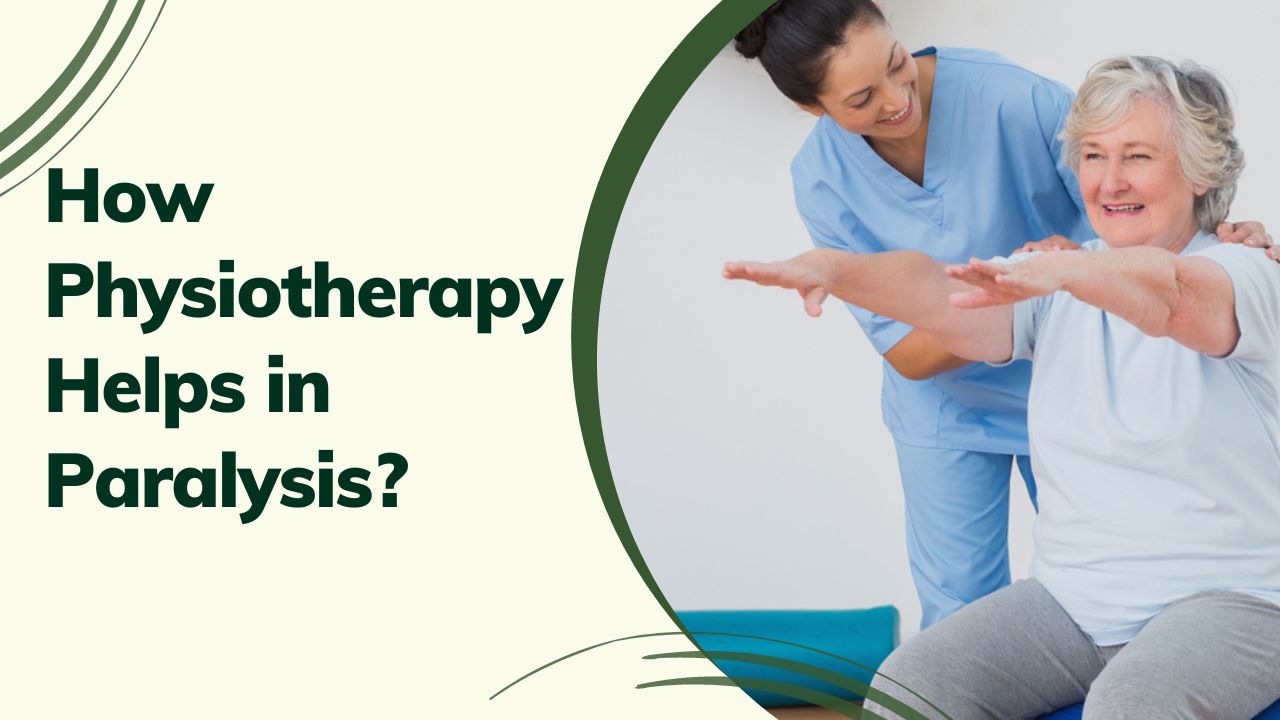Paralysis can be a devastating condition that can severely impact a person’s quality of life. However, with the right treatment and support, many people with paralysis are able to regain some degree of movement and independence.
Physiotherapy is an important component of treatment for paralysis, as it can help improve muscle strength and control, reduce spasticity, and improve overall physical function. In this article, we’ll discuss how physiotherapy can help individuals with paralysis.
What is Physiotherapy?
Physiotherapy, also known as physical therapy, is a form of treatment that uses exercise, manual therapy, and other techniques to help improve physical function and reduce pain.
Physiotherapy is commonly used to treat a wide range of conditions, including musculoskeletal disorders, neurological disorders, and sports injuries.
In the case of paralysis, physiotherapy focuses on helping individuals regain as much strength and mobility as possible.
The goal of physiotherapy is to improve physical function, reduce muscle stiffness and spasticity, and prevent secondary complications, such as pressure sores.
Which Therapy is Best for Paralysis?
Improves Muscle Strength and Function
One of the primary goals of physiotherapy in paralysis is to improve muscle strength and function. Through a combination of exercise, manual therapy, and other techniques, physiotherapists can help individuals regain some degree of movement and control in their affected muscles.
Physiotherapists typically develop a customized exercise program based on an individual’s specific needs and goals. This may include exercises to improve strength, range of motion, and balance.
Over time, these exercises can help individuals with paralysis build muscle mass and improve overall physical function.
Reduces Spasticity
Spasticity is a common complication of paralysis, characterized by increased muscle tone and stiffness. Spasticity can make it difficult to move or control one’s limbs, and can also cause pain and discomfort.
Physiotherapy can help reduce spasticity through a variety of techniques, such as stretching, massage, and exercise.
Stretching can help lengthen tight muscles and reduce tension, while massage can help increase blood flow and promote relaxation in affected muscles. Exercise can also help improve flexibility and reduce spasticity over time.
Prevents Contractures
Contractures occur when muscles become permanently shortened due to inactivity or immobility. Contractures can cause permanent deformity and can make it difficult or impossible to move affected limbs.
Physiotherapy can help prevent contractures by maintaining range of motion in affected limbs. Through a variety of stretching and exercise techniques, physiotherapists can help keep muscles and joints flexible and prevent the development of contractures.
Enhances Cardiovascular Health
Paralysis can significantly impact cardiovascular health, as individuals with paralysis are often unable to engage in physical activity to the same extent as able-bodied individuals.
This can lead to a range of cardiovascular complications, such as blood clots, pulmonary embolism, and heart disease.
Physiotherapy can help improve cardiovascular health in individuals with paralysis by introducing physical activity into their daily routine. Through exerci
ses such as cycling, rowing, or swimming, individuals with paralysis can improve their cardiovascular health and reduce the risk of complications.
Improves Overall Quality of Life
Perhaps the most significant benefit of physiotherapy in paralysis is the improvement in overall quality of life.
By improving muscle strength, reducing spasticity, preventing contractures, and enhancing cardiovascular health, physiotherapy can help individuals with paralysis achieve greater independence, function, and mobility.
This can significantly improve their quality of life and help them better manage the challenges of living with paralysis.
Conclusion
Paralysis can be a difficult condition to live with, but with the right treatment and support, individuals with paralysis can regain much of their independence and mobility.
Physiotherapy is an essential component of treatment for paralysis, as it can help improve muscle strength and function, reduce spasticity, prevent contractures, and enhance overall physical function.
If you or a loved one is living with paralysis, it’s important to speak with a physiotherapist to learn more about how physiotherapy can help in your particular case.
Along with the physiotherapy, Ayurveda also helps in improving the symptoms related to paralysis.
Dr Dassan’s Ayurveda provides you the best paralysis treatment in ayurveda by working not only on the symptoms but also the root cause of disease. Proper consultation with our Ayurveda expert helps you to live a healthy life in a natural way.

